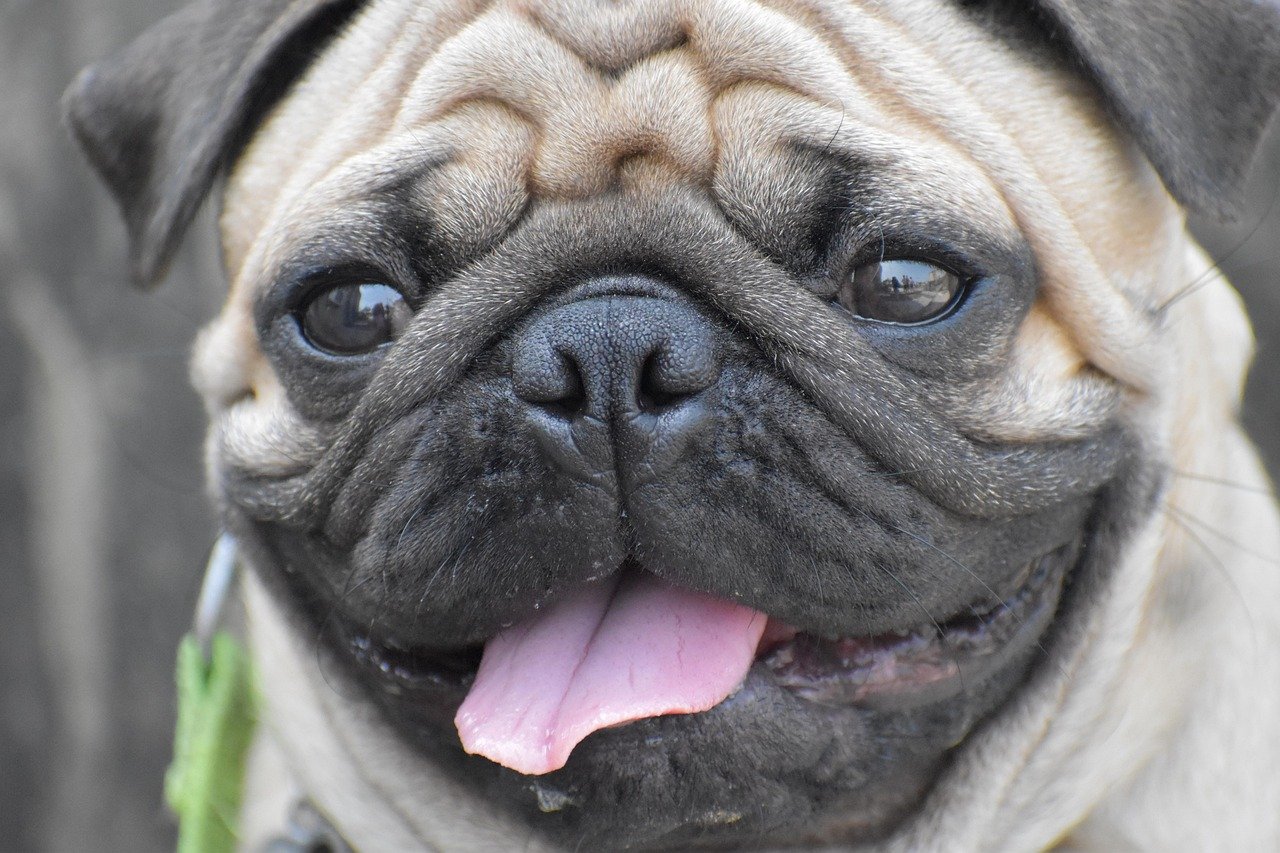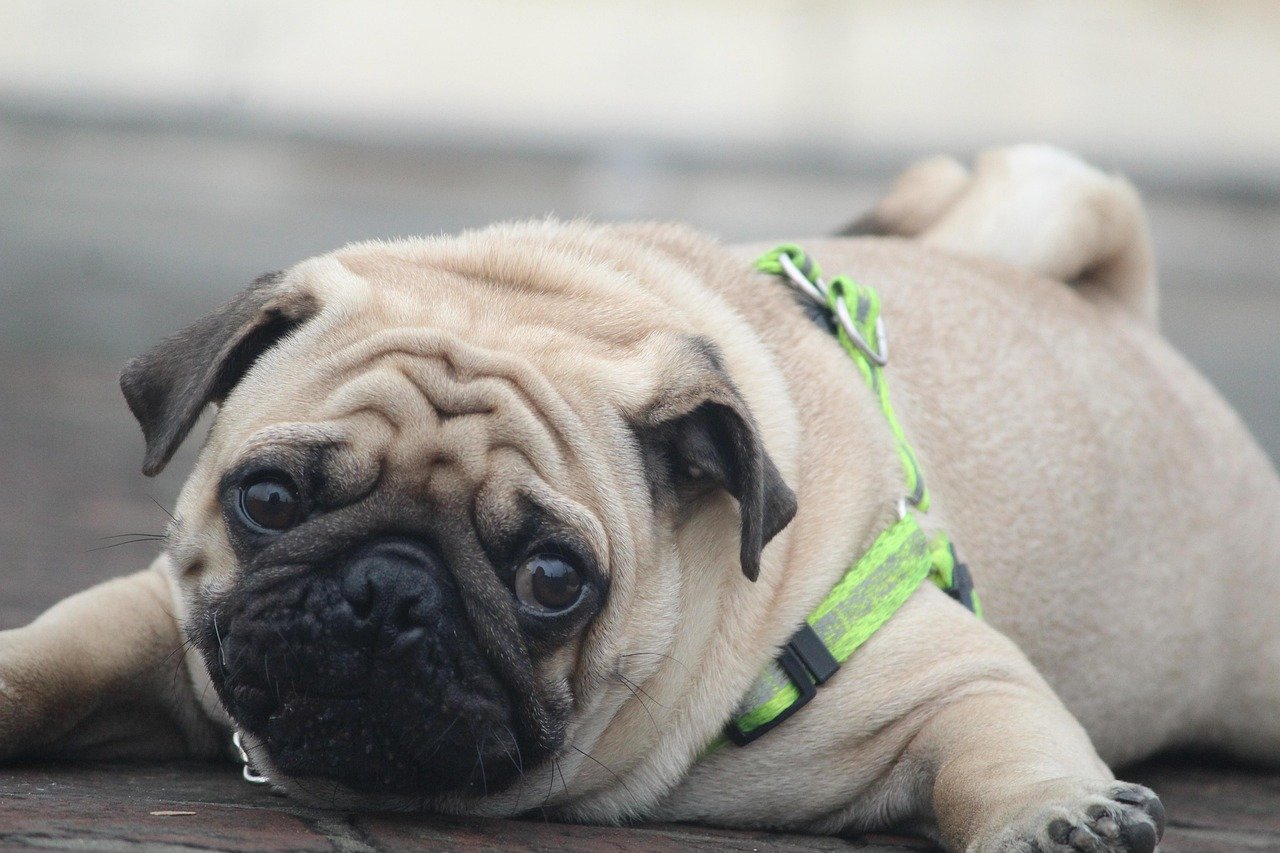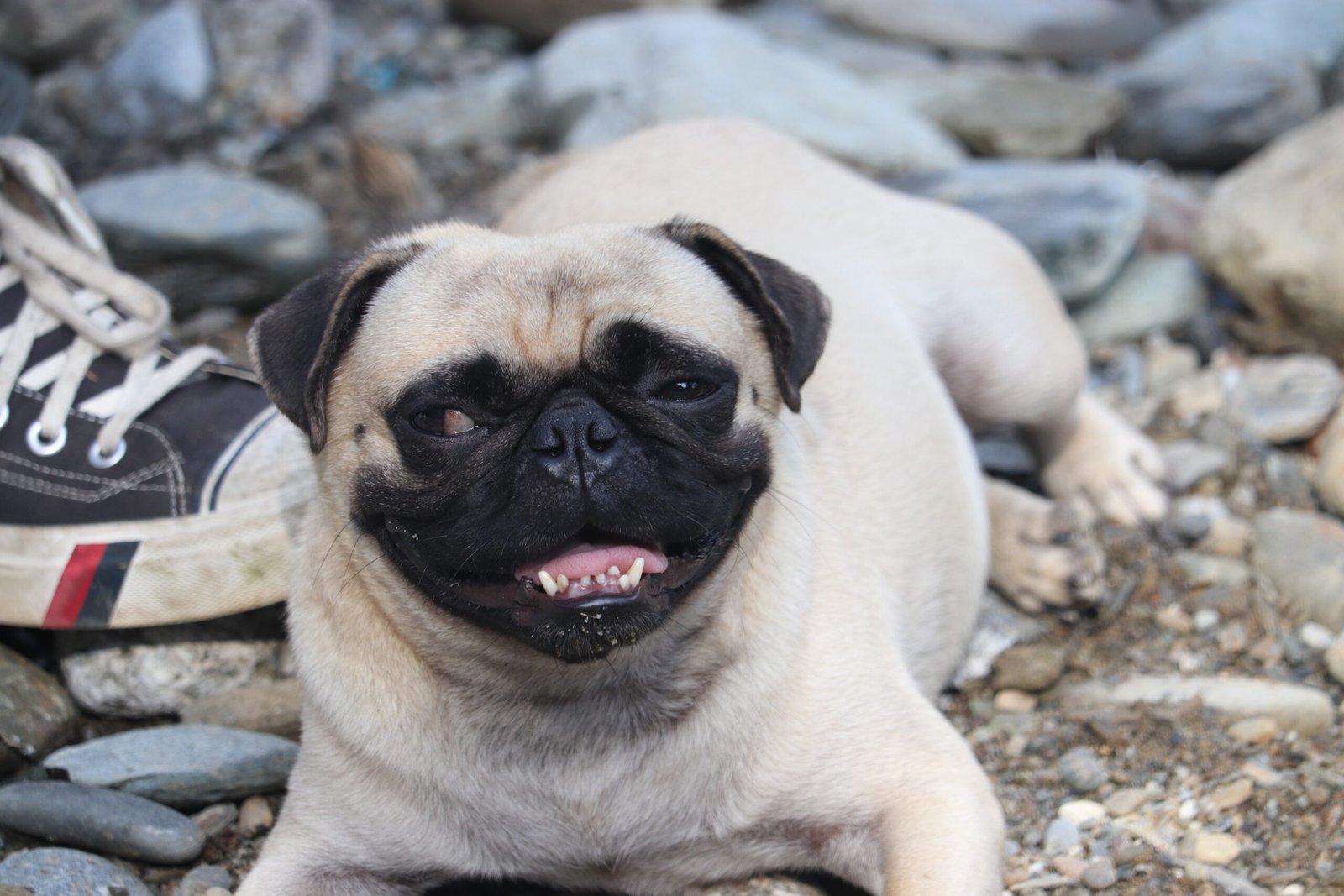Pugs are adorable little bundles of joy, but their unique features, like their short snouts and compact bodies, can make them more susceptible to overheating. Since they don’t handle heat as well as other breeds, it’s important to keep an eye on them, especially during warmer months. Understanding their specific needs—like avoiding long walks in the sun or providing plenty of water and cool spaces—will help keep your pug comfortable and safe. By adjusting their routine and environment, you’ll ensure your pug stays happy and healthy, even in the heat!
The Pug’s Unique Anatomy: A Double-Edged Sword

Pugs are famous for their squished faces, wide-set eyes, and short snouts. Known as brachycephalic dogs, their adorable features are the result of generations of careful breeding. But this same charm comes with a hidden cost: those compact airways make it much harder for pugs to cool themselves down by panting. Unlike dogs with longer snouts, pugs have a smaller, more crowded airway, which means less air moves with each breath. On a hot day or after some playful zoomies, your pug’s body can heat up far faster than you might expect. If you think of their breathing system as a tiny straw instead of a wide pipe, it’s easy to see why they struggle when temperatures rise.
Panting Problems: Why Cooling Down Is Harder for Pugs

All dogs rely on panting to regulate their body temperature, but this natural cooling system is less effective for pugs. Because their nasal passages and throats are so narrow, they can’t move air as quickly or efficiently. This means that even a little bit of exercise, excitement, or warm weather can send their body temperature soaring. You might notice your pug panting heavily, drooling, or even coughing after just a short walk. It’s a sign that their body is working overtime to stay cool, and it’s important to pay attention. Ignoring these early warning signs can quickly lead to overheating, or even heatstroke—a potentially life-threatening emergency.
Common Signs Your Pug Is Overheating

Knowing what to look for can help you catch overheating before it becomes dangerous. Some of the most obvious signs include excessive panting, bright red or pale gums, drooling, and rapid heartbeat. Your pug may seem restless, anxious, or confused. Some dogs stagger, collapse, or even vomit if things get really bad. Their skin may feel warm to the touch, and their breathing may become noisy or strained. If you ever notice your pug acting “off” on a warm day, it’s crucial to intervene right away. The sooner you act, the better your chances of keeping your pug safe and healthy.
Danger Zones: When and Where Pugs Are Most at Risk

Pugs can overheat quickly, especially in certain situations. Hot, humid weather is the biggest risk factor, but even a stuffy indoor room or a parked car can be deadly. Direct sunlight, asphalt, and enclosed spaces all trap heat and can make your pug’s struggle worse. Vigorous play, long walks, or even a stressful car ride can push their little bodies over the edge. It’s important to remember that pugs can overheat in just minutes—sometimes before you even realize it. Always keep an eye on your surroundings and think twice before taking your pug out in the heat.
Hydration: The Lifeline Your Pug Needs

Keeping your pug hydrated is one of the simplest and most powerful ways to prevent overheating. Water helps regulate body temperature and replaces fluids lost through panting. Always provide fresh, cool water at home and bring a portable water bowl when you’re out. Encourage your pug to take water breaks during walks or playtime, even if they seem focused on having fun. If your pug isn’t interested in drinking, try offering ice cubes as a treat or adding a splash of low-sodium chicken broth to their water. Hydration can truly be a lifesaver, especially when temperatures start to climb.
Smart Exercise: Play It Cool with Your Pug
Pugs love to play, but their enthusiasm can sometimes get them into trouble. It’s important to adapt your exercise routine to their unique needs. On hot or humid days, limit outdoor playtime and avoid the midday sun. Early mornings or late evenings are the best times for walks. Focus on short, gentle strolls instead of long, intense sessions. Indoors, you can keep your pug active with games like fetch in a cool room or simple training exercises. Remember, it’s better to have several short play sessions than one long one that could end in overheating.
Creating a Cool Home Environment
Your home should be a safe haven for your pug, especially during the warmer months. Use fans or air conditioning to keep indoor temperatures comfortable. Provide cool, shaded spots for your pug to rest—think tile floors, cooling mats, or even a damp towel. Keep curtains closed during the hottest part of the day to block out heat. If you don’t have air conditioning, consider creating a cool-down zone with a fan and a bowl of ice water nearby. Even small changes can make a huge difference in keeping your pug comfortable and safe.
Grooming and Skin Care: Shedding Light on Overheating

Believe it or not, your pug’s coat can affect how easily they overheat. Regular brushing helps remove loose fur, which can trap heat close to their skin. But be careful: never shave your pug’s coat completely, as their fur also acts as insulation against both heat and sunburn. Instead, focus on keeping them clean and free of mats. Pay special attention to their wrinkles, as trapped moisture and dirt can cause irritation or infection. A clean, well-groomed pug is better equipped to handle temperature changes and stay comfortable, no matter the weather.
Travel Safety: Keeping Your Pug Cool on the Go

Traveling with your pug can be fun, but it comes with extra risks. Cars heat up shockingly fast—even with the windows cracked, temperatures inside can become deadly in just minutes. Never leave your pug alone in a parked car, even for a quick errand. When driving, use air conditioning and provide plenty of water. Bring along cooling aids like portable fans, damp towels, or cooling vests. If you’re flying, check the airline’s pet policies and avoid traveling during the hottest part of the day. Always plan ahead and prioritize your pug’s comfort and safety.
Emergency Steps: What to Do If Your Pug Overheats

Sometimes, despite your best efforts, your pug may start showing signs of overheating. If this happens, act fast. Move them to a cooler area immediately—indoors or into the shade. Offer cool (not ice-cold) water and gently wet their paws, belly, and ears with a damp cloth. Use a fan to help lower their body temperature. Never use ice or very cold water, as this can make things worse. If your pug doesn’t start improving within a few minutes, or if they seem very weak or confused, get to a veterinarian as quickly as possible. Quick action can be the difference between recovery and tragedy.
Preventive Vet Care: Partnering for Your Pug’s Health

Regular vet check-ups are essential for every pug owner. Your vet can help identify breathing problems, weight issues, or other health concerns that make overheating more likely. They may recommend surgery for severe airway problems, or suggest specialized care during hot weather. Always update your vet on any changes in your pug’s behavior, especially if they seem more tired, are coughing, or have trouble breathing. Early intervention can prevent bigger problems down the road and ensure your pug stays happy and healthy for years to come.
In the end, taking extra care of your pug in warmer weather is all about keeping them cool, comfortable, and safe. By being mindful of their unique needs, like providing shade, hydration, and avoiding strenuous activities in the heat, you’ll help your pug live their best life. A few simple adjustments to their daily routine can make a world of difference. After all, a happy, cool pug is a healthy pug!
Jen is a passionate nature lover and ocean conservationist. She has dedicated her life to protecting the environment and preserving the beauty of the natural world. Growing up in a small coastal town, Jen sincerely appreciated the ocean and its inhabitants. She has spent countless hours exploring the shoreline, learning about the creatures that inhabit the waters, and advocating for their protection. Jen is an active member of ocean conservation organizations, and she is committed to educating the public about the importance of conserving wildlife and the natural environment.






